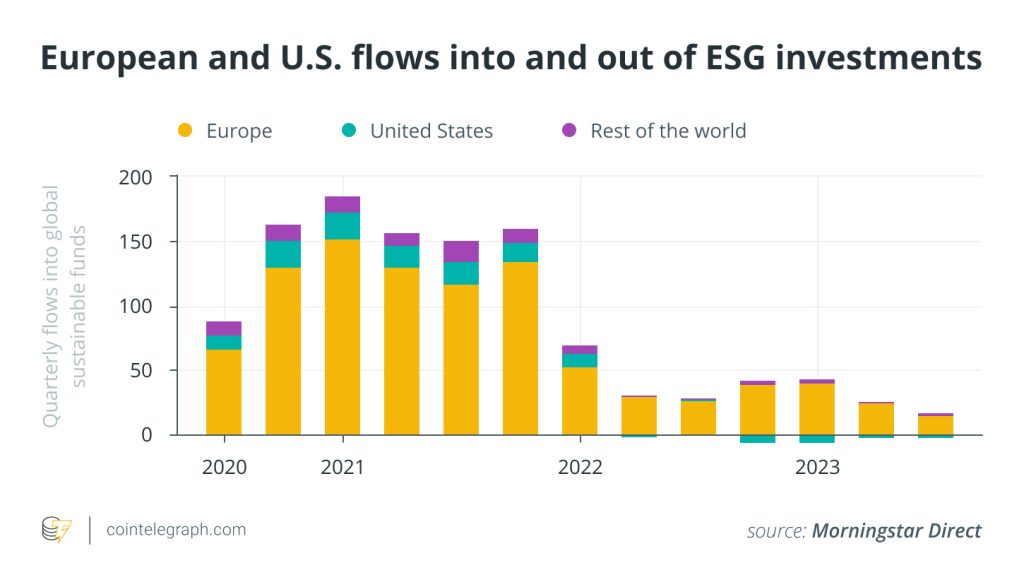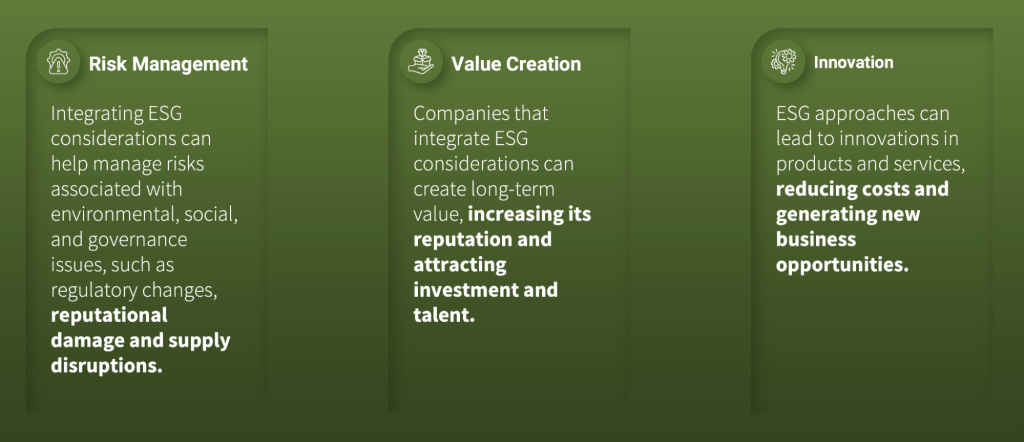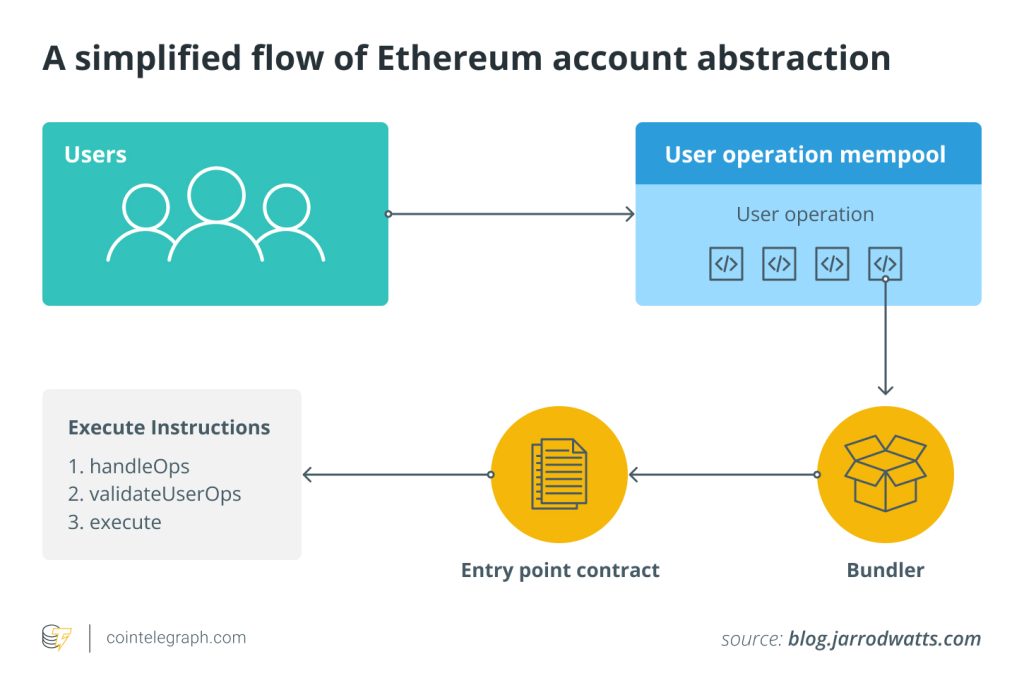What is environmental, social and governance (ESG) investing?


ESG investing refers to an investment model that takes into account environmental, social and governance considerations alongside traditional performance factors when choosing to invest in companies. The roots of ESG investments can be traced back to socially responsible investing practices that emerged in the mid-20th century.
A small group of investment professionals initially sought to align their investments with their personal values, which primarily drove ethical and moral considerations in ESG investing. The larger investment industry eventually adopted the ethical investing concept.
The United Nations Global Compact Initiative report from 2004 that pushed for “better inclusion of environmental, social, and corporate governance (ESG) factors in investment decisions” is where the ESG acronym originated.
A group of prominent investors and investment firms adopted the investment model at the time in an effort to address growing social and environmental concerns. The model gained considerable popularity in subsequent years.
Today, ESG investing is among the fastest-growing segments in the asset management sector. Consequently, ESG assets under management in the industry are forecasted to grow to $33.9 trillion by 2026 from $18.4 trillion in 2021 due to rising investor demand.
The most common types of ESG investments are ESG mutual funds, ESG index funds and ESG ETFs.
Key factors that drive ESG investing
The following is a breakdown of the key components of ESG investing, namely the environmental, social and governance factors:
The environmental factor
When considering the environmental aspect of ESG investing, investors prioritize ESG companies that have demonstrated their commitment to environmental risk management.
Aspects that are frequently assessed include the companies’ carbon footprint and whether they are involved in activities that cause chemical pollution or habitat destruction. ESG investors usually evaluate environmental factors alongside financial risks and opportunities to make informed decisions.
The social factor
When considering this factor, ESG investors look at the social impact of the companies that they are looking to invest in as a primary investment criterion. When contemplating this aspect, they give preference to companies that foster harmonious relationships with stakeholders, employees and society.
The companies’ relationships with suppliers and customers are also considered, alongside other broader social aspects, such as their adherence to human rights and their support for social justice agendas.

The governance factor
When it comes to the governance factor, ESG investors look at a company’s internal structures, processes and management practices. This is because governance strategies impact a company’s long-term growth potential.
One way of analyzing governance is by looking at a company’s leadership and board composition. ESG investors look for boards that are diverse, with a mix of skills and experiences that can effectively address the company’s challenges while enhancing growth opportunities.
When considering this criterion, ESG investors also examine a company’s financial reporting practices and the robustness of its auditing procedures. This helps them to single out companies that have high adherence to recommended accounting standards and have reliable financial information.
Another aspect that ESG investors consider is rigorous internal controls, especially pertaining to mechanisms such as risk management, compliance and operational efficiency. ESG investors evaluate the effectiveness of these internal controls, as companies with effective internal controls are better prepared to identify and address potential issues promptly.
Common approaches to ESG investing
ESG investing involves a repertoire of approaches that investors can adopt to make informed decisions. It is important to note that ESG approaches are not mutually exclusive.
This means that investors can sometimes combine strategies to meet their objectives. The selection of an approach hinges on a medley of factors that include investor values, risk appetite, the desired level of engagement and the specific ESG issues that take precedence. The following is an outline of some common ESG investing approaches:
Best-in-class approach
In this approach, ESG investors seek out companies that excel in their respective industries. By investing in best-in-class companies, investors support industry leaders in sustaining their exemplary ESG practices.
The strategy additionally allows investors to create investment portfolios consisting of a diversified blend of exemplary companies from diverse industries.
The negative screening approach
The negative screening of ESG investing involves excluding certain companies or industries from an investment portfolio based on specific ESG criteria or values. It is also known as exclusionary screening.
With the negative screening approach, investors identify and eliminate companies that are involved in activities deemed undesirable from an ESG perspective, such as those with a track record of human rights transgressions or those with subpar product safety standards. Usually, the screening criteria are based on widely accepted ESG standards or the investor’s own values.
The thematic approach
The thematic approach to ESG investing involves a strategic focus on select ESG themes. Instead of excluding industries or companies, this approach seeks to invest in enterprises that proactively promote certain ESG agendas.
The themes range from renewable energy to gender equality. The choice of themes hinges on the investors’ priorities and the challenges that they wish to address.
By investing in companies that actively contribute to positive change within specific thematic spheres, investors actively bolster the advancement of sustainable ESG solutions while concurrently pursuing potential financial returns.
The activist investing approach
Activist investing, as an ESG investing approach, involves the active participation of investors in influencing a company’s behavior or practices related to ESG factors. This model of investing goes beyond traditional investment strategies focused solely on financial returns.
In activist investing, investors actively use their ownership stakes to advocate for change within companies.
Activist investors often take a more proactive role by, for example, engaging in dialogue with company management and filing shareholder resolutions. They also leverage their influence and voting power to push for changes that can enhance a company’s long-term support of their desired ESG goals.
What are ESG scores, and how are they calculated?
ESG scores are ratings assigned to companies to indicate their performance in matters related to their environmental impact, social responsibility and proficiency in corporate governance.
The scores are formulated with the intent of furnishing investors and the general public with a standardized gauge of a company’s ESG practices.
ESG rating agencies or organizations that specialize in evaluating and quantifying ESG performance, such as Thomson Reuters Research, Morgan Stanley Capital International and Bloomberg, frequently assign scores. The agencies employ their own methodologies and criteria to analyze relevant data and information related to the companies, typically gathered from public disclosures and reports from the companies themselves.
ESG scores are often presented on a numerical scale, such as from 0 to 100, or a letter-based ranking system. Higher scores indicate stronger ESG performance, demonstrating that a company is actively addressing environmental and social challenges and practicing good governance.
Investors and stakeholders can utilize ESG scores as a decision-making tool to evaluate a company’s dedication to sustainable and responsible practices. As such, the scores can sometimes influence capital allocation.
It’s important to note that ESG scores can vary between different rating agencies due to disparities in their classification methodologies and data sources. Therefore, understanding the methodologies used is important when interpreting ESG scores from different companies.
Is ESG investing good?
ESG investing provides myriad merits and advantages that have captured the attention of investors worldwide. The following is an outline of some key benefits of ESG investing:
Long-term value creation
The ESG investing model is based on conscientious practices that foster long-term value generation. By considering environmental, governance and social factors alongside business performance, ESG investors are able to identify enterprises poised for long-term success due to their high integrity and consistent performance.
Risk mitigation
ESG analysis enables investors to identify risks associated with certain companies. Companies with strong ESG practices are often better prepared to tackle environmental and social challenges, regulatory transformations and reputational hazards.
By considering companies’ ESG factors, investors can potentially reduce their exposure to companies with significant risks by choosing companies with high ESG scores and a healthy risk-return profile.
Value alignment
By investing in ESG-focused companies, investors have the opportunity to promote their values through their investments.
Positive societal and environmental impact
ESG investing acts as a channel through which investors can invest in ESG funds to facilitate positive change. By directing capital toward companies that prioritize ESG factors, investors actively engage in impact investing by contributing to initiatives that tackle pressing global challenges, such as climate change, resource depletion and social inequality. This helps to effect positive change in the world.
Enhancing innovation
ESG investing plays a pivotal role in fostering innovation. By integrating environmental, social and governance factors into investment decisions, ESG investing incentivizes companies to adopt more sustainable and responsible practices.
The focus on sustainability often spurs innovation by driving companies to develop more environmentally friendly and ethically sound technologies, products and services.
Cons of ESG investing
While ESG investing offers numerous advantages, it is prudent to consider the potential cons and limitations associated with this investment approach. The following is an outline of some drawbacks to ESG investing:
Lack of standardization
The absence of standardized ESG reporting frameworks presents a challenge for investors seeking to compare and evaluate companies’ ESG performance accurately. Diverse rating agencies employ disparate methodologies and criteria, resulting in inconsistencies in ESG scores and rankings. The problem has the potential to negatively impact investment choices, as the enumeration of ESG scores often entails subjective judgements and varied interpretations.
The process of determining the relevance of factors and their appropriate weightings is also subjective and can vary among agencies and investors. This subjectivity introduces biases and discrepancies in ESG assessments, potentially undermining the credibility of ESG ratings.
Data limitations in reliability
ESG investing relies heavily on the availability of high-quality data. However, reliable and consistent ESG data can be hard to find, especially when it comes to small companies or those operating in emerging markets.
Limited data hampers accurate ESG assessments and may lead to incomplete or misleading conclusions about a company’s ESG performance. Furthermore, companies may be motivated to present their ESG practices favorably, thereby causing data inaccuracies.
Financial performance trade-offs
Prioritizing ESG factors in investment decisions may entail trade-offs with financial performance. This is because investing in companies with robust ESG practices can restrict investment opportunities in industries or companies with poor ESG performance. As such, certain industries, such as extractive industries, are likely to get less backing from ESG investors.
Their exclusion is also likely to result in missed investment opportunities, especially if the excluded companies have strong growth potential and ultimately deliver strong financial returns.
A narrow focus
ESG investing often emphasizes environmental and social factors, which may overshadow other crucial aspects of a company’s performance. Companies excelling in ESG factors could have weaknesses that ESG investors overlook.
Consequently, overemphasis on ESG factors without considering broader financial and operational aspects of a company’s performance could lead to incomplete investment assessments and potential risks.
Can blockchain drive positive environmental, social and governance impact?
Blockchain technology has the potential to have a positive impact on the environmental, social and governance factors of ESG investing. By leveraging blockchain’s decentralized nature, investors from around the world can participate in impact investing, regardless of their location.
The use of blockchain for this purpose would allow a larger number of investors to engage in ESG investment strategies and contribute to positive environmental, social and governance changes.
Related: Climate tech VC argues Bitcoin’s ESG positives outweigh its negatives 31:1
Blockchain technology can also be used to advance inclusivity within companies, a key aspect of ESG investing, by democratizing decision-making processes. This can be achieved through the implementation of blockchain-based voting systems, which support equal participation and enable stakeholders to engage actively in decision-making processes through a transparent and secure voting mechanism.
When it comes to making a positive impact on the environment, blockchain technology can also be employed to enhance the transparency of carbon offset programs. Carbon offset programs are pioneering endeavors aimed at mitigating the detrimental effects of greenhouse gas emissions. These initiatives enable businesses that seek to reduce their carbon footprint to make strategic investments in projects that diligently work to counteract greenhouse gas emissions.
Carbon credits are at the core of carbon offset programs, with each credit representing the reduction of one metric ton of carbon dioxide or its equivalent in other greenhouse gases from the atmosphere. Entities dedicated to offsetting their emissions can efficiently obtain carbon credits from certified projects.
Blockchain technology can be utilized to streamline the tracking and management of carbon credits. Existing carbon offset projects that leverage blockchain technology employ token-based systems to represent and manage carbon credits. This approach ensures transparency in tracking the ownership, transfer and retirement of carbon credits.
Another benefit is that blockchain technology is effective in ensuring that carbon credits are uniquely identified. This helps prevent instances of double counting, where multiple parties claim the same credit. The verification process helps to maintain the integrity and credibility of the offsets.
That said, collaboration among stakeholders, including investors, regulators and blockchain technology providers, is important for some of the blockchain implementations to work.
The future of ESG investing
The future of ESG investing is promising due to a confluence of factors. One of them is the increased mainstream adoption of ESG investing. What was once considered a niche strategy has now gained broader acceptance within investment circles. Institutional investors, including pension funds and asset managers, are increasingly recognizing the importance of integrating ESG considerations into their investment processes.
This is because there is strong evidence that companies with high ESG scores usually outperform those with lower ESG scores when it comes to product delivery and stock performance. Much of this is due to the reduced risks. Companies with high ESG scores are, for example, less likely to be penalized or suffer reputational damage due to environmental damage or social injustices.
As such, the trend is expected to grow as investors become more cognizant of the long-term benefits of the investment approach.
The ESG investing field is also poised to advance further thanks to increased efforts to standardize ESG metrics and reporting frameworks. The establishment of globally accepted standardized benchmarks will enhance comparability among ESG research agencies, subsequently enabling investors to assess performance more effectively. Standardization of ESG metrics will also aid ESG investors in making well-informed investment decisions.






… [Trackback]
[…] Read More Info here to that Topic: x.superex.com/academys/beginner/3102/ […]
… [Trackback]
[…] Read More on to that Topic: x.superex.com/academys/beginner/3102/ […]
… [Trackback]
[…] Here you can find 56752 more Info to that Topic: x.superex.com/academys/beginner/3102/ […]
… [Trackback]
[…] Find More Information here to that Topic: x.superex.com/academys/beginner/3102/ […]
… [Trackback]
[…] Here you will find 5671 more Information on that Topic: x.superex.com/academys/beginner/3102/ […]
… [Trackback]
[…] Find More Info here to that Topic: x.superex.com/academys/beginner/3102/ […]
… [Trackback]
[…] There you will find 95021 more Info to that Topic: x.superex.com/academys/beginner/3102/ […]
… [Trackback]
[…] Find More to that Topic: x.superex.com/academys/beginner/3102/ […]
… [Trackback]
[…] Find More to that Topic: x.superex.com/academys/beginner/3102/ […]
… [Trackback]
[…] Info on that Topic: x.superex.com/academys/beginner/3102/ […]
… [Trackback]
[…] Find More Info here on that Topic: x.superex.com/academys/beginner/3102/ […]
… [Trackback]
[…] Read More Info here on that Topic: x.superex.com/academys/beginner/3102/ […]
… [Trackback]
[…] Info on that Topic: x.superex.com/academys/beginner/3102/ […]
… [Trackback]
[…] Information to that Topic: x.superex.com/academys/beginner/3102/ […]
… [Trackback]
[…] Read More on on that Topic: x.superex.com/academys/beginner/3102/ […]
… [Trackback]
[…] Read More Info here to that Topic: x.superex.com/academys/beginner/3102/ […]
… [Trackback]
[…] Info on that Topic: x.superex.com/academys/beginner/3102/ […]
… [Trackback]
[…] There you can find 3576 more Info on that Topic: x.superex.com/academys/beginner/3102/ […]
… [Trackback]
[…] Info on that Topic: x.superex.com/academys/beginner/3102/ […]
… [Trackback]
[…] Here you can find 18771 additional Information to that Topic: x.superex.com/academys/beginner/3102/ […]
… [Trackback]
[…] Find More on that Topic: x.superex.com/academys/beginner/3102/ […]
… [Trackback]
[…] Read More Information here on that Topic: x.superex.com/academys/beginner/3102/ […]
… [Trackback]
[…] Read More Information here on that Topic: x.superex.com/academys/beginner/3102/ […]
… [Trackback]
[…] Read More here on that Topic: x.superex.com/academys/beginner/3102/ […]
… [Trackback]
[…] There you will find 65786 additional Information to that Topic: x.superex.com/academys/beginner/3102/ […]
… [Trackback]
[…] Information to that Topic: x.superex.com/academys/beginner/3102/ […]
… [Trackback]
[…] Read More to that Topic: x.superex.com/academys/beginner/3102/ […]
… [Trackback]
[…] Find More to that Topic: x.superex.com/academys/beginner/3102/ […]
… [Trackback]
[…] Info on that Topic: x.superex.com/academys/beginner/3102/ […]
… [Trackback]
[…] Read More Info here on that Topic: x.superex.com/academys/beginner/3102/ […]